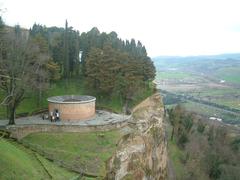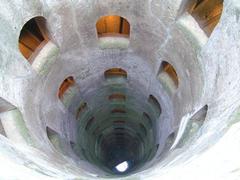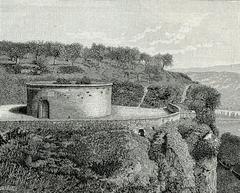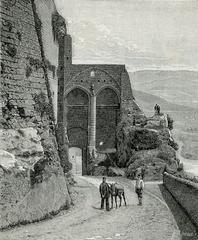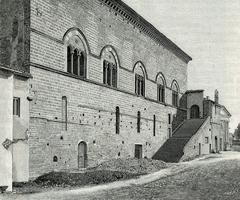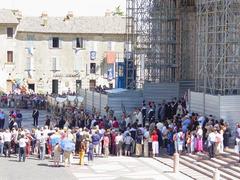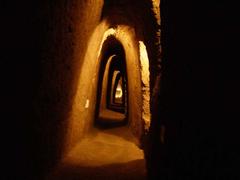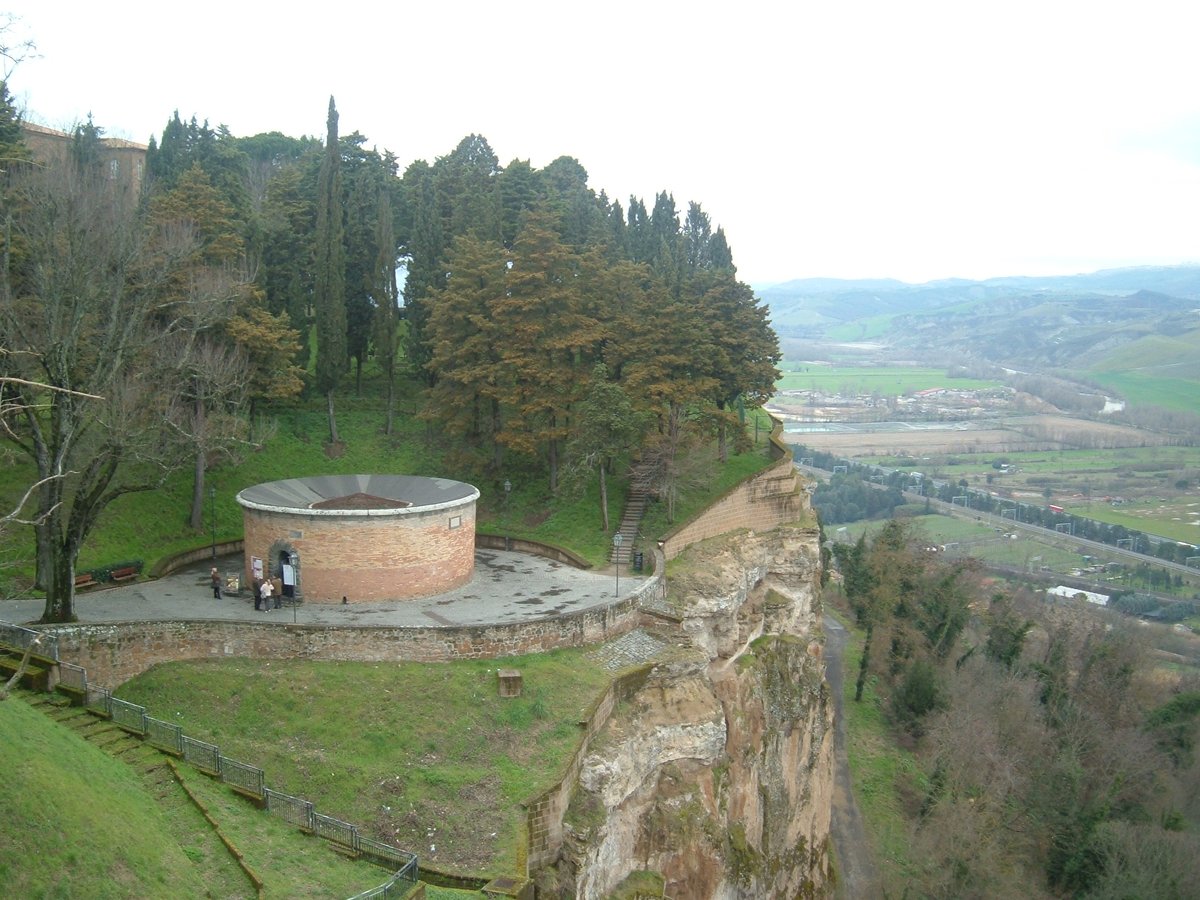
Pozzo Di S. Patrizio: Visiting Hours, Tickets, and Historical Insights
Date: 16/08/2024
Introduction
Pozzo di San Patrizio, also known as St. Patrick’s Well, is a captivating historical landmark situated in the picturesque town of Orvieto, Umbria, in central Italy. This Renaissance engineering marvel offers an intriguing glimpse into the past, exemplifying the ingenuity and foresight of its creators. Commissioned by Pope Clement VII in 1527 after the traumatic Sack of Rome, the well was intended to secure a reliable water supply during potential sieges (Wikipedia). Designed by the renowned architect Antonio da Sangallo the Younger, Pozzo di San Patrizio was completed in 1537 and remains an iconic symbol of advanced hydraulic engineering and architectural prowess (ItalyGuides). The well’s unique double-helix staircase design, which allows for uninterrupted movement, is a testament to Renaissance ingenuity and is inspired by the spiral staircase in Villa Belvedere in the Vatican (Exploring Umbria). This guide aims to provide comprehensive information for visitors, including historical context, architectural insights, and practical travel tips to enhance your visit to this remarkable site.
Table of Contents
- Introduction
- History of Pozzo di San Patrizio
- Architectural Details
- Visitor Information
- FAQ
- Conclusion
History of Pozzo di San Patrizio
Origins and Construction
The Pozzo di San Patrizio was commissioned by Pope Clement VII in 1527, following the Sack of Rome by the troops of Holy Roman Emperor Charles V. Fearing a similar siege in Orvieto and recognizing the city’s vulnerable water supply, the Pope sought a solution to ensure a steady water source (Wikipedia). Renowned architect-engineer Antonio da Sangallo the Younger from Florence was entrusted with this project. Construction began in 1527 and was completed in 1537 during the papacy of Pope Paul III (ItalyGuides).
Engineering Marvel
The well is celebrated as an engineering marvel of the Renaissance period. It is cylindrical, with a depth of 53 meters (approximately 174 feet) and a diameter of 13 meters (about 43 feet). Its most remarkable feature is the double helix staircase design, consisting of two separate spiral staircases that never intersect, allowing mules to carry water up and down without obstruction (Ancient Origins). Each staircase comprises 248 steps and is illuminated by 72 windows, creating a surreal atmosphere as visitors descend. The double helix design was inspired by the spiral staircase in Villa Belvedere in the Vatican, showcasing Sangallo’s ingenuity and architectural prowess (Exploring Umbria).
Historical Significance
Although constructed as a precaution against potential sieges, the well was never used for its intended purpose. Before its completion, Pope Clement VII and Charles V reconciled, and Orvieto remained free from invasion. Nevertheless, construction continued, and the well was completed in 1537 (Ancient Origins). Originally named Pozzo della Rocca (Fortress Well) due to its proximity to the Albornoz Fortress, it was renamed Pozzo di San Patrizio in the 19th century by monks from a nearby convent, inspired by the medieval legend of St. Patrick’s Purgatory in Ireland (Atlas Obscura).
Architectural Details
The well is not only an engineering feat but also a work of art. The external part is decorated with the lilies of the Farnese family, adding an ornamental touch. The cylindrical structure was carved into the volcanic tuff of the plateau on which Orvieto stands, demonstrating advanced hydraulic engineering techniques of the time (ItalyScapes). At the bottom, the water level remains constant due to a natural spring and a conduit that drains excess water, ensuring a reliable water supply for the city (Exploring Umbria).
Visitor Information
Visiting Hours and Tickets
The Pozzo di San Patrizio is open to visitors daily. It is advisable to check the official website for the most up-to-date visiting hours and ticket prices. Tickets can be purchased at the site or online in advance to avoid long queues.
Access and Travel Tips
Visitors can access the well via a funicular that runs from the Orvieto railway station to Piazza Cahen, located about 150 meters from the well. The funicular operates daily, providing a convenient and scenic route to this historical site (ItalyScapes).
Nearby Attractions
While in Orvieto, visitors can explore other historical sites, such as the Orvieto Cathedral, Albornoz Fortress, and the Etruscan Museum. The city’s rich history and stunning architecture make it a worthwhile destination.
FAQ
What are the visiting hours for Pozzo di San Patrizio?
The well is open daily, but visiting hours may vary. It is recommended to check the official website for the most up-to-date information.
How much are tickets for Pozzo di San Patrizio?
Ticket prices can vary, so it’s best to check the official website for current rates. Tickets can be purchased on-site or online.
Is the site accessible for people with mobility issues?
The site includes many steps, which may pose a challenge for visitors with mobility issues. However, the surrounding area and the funicular are generally accessible.
Conclusion
The Pozzo di San Patrizio stands as a testament to Renaissance innovation and the foresight of Pope Clement VII. This engineering marvel not only offers a glimpse into the past but also highlights the architectural prowess of its time. Visitors to Orvieto should not miss the opportunity to explore this unique historical site and experience its enduring legacy. For more information on visiting Pozzo di San Patrizio and other historical sites in Orvieto, follow our blog and download our mobile app for the latest updates and travel tips.
References
- Wikipedia, 2024, Pozzo di San Patrizio (source url)
- ItalyGuides, 2024, Pozzo di San Patrizio (source url)
- Ancient Origins, 2024, Engineering Marvel of Pozzo di San Patrizio (source url)
- Exploring Umbria, 2024, Discover Orvieto (source url)
- ItalyScapes, 2024, Pozzo di San Patrizio (source url)
